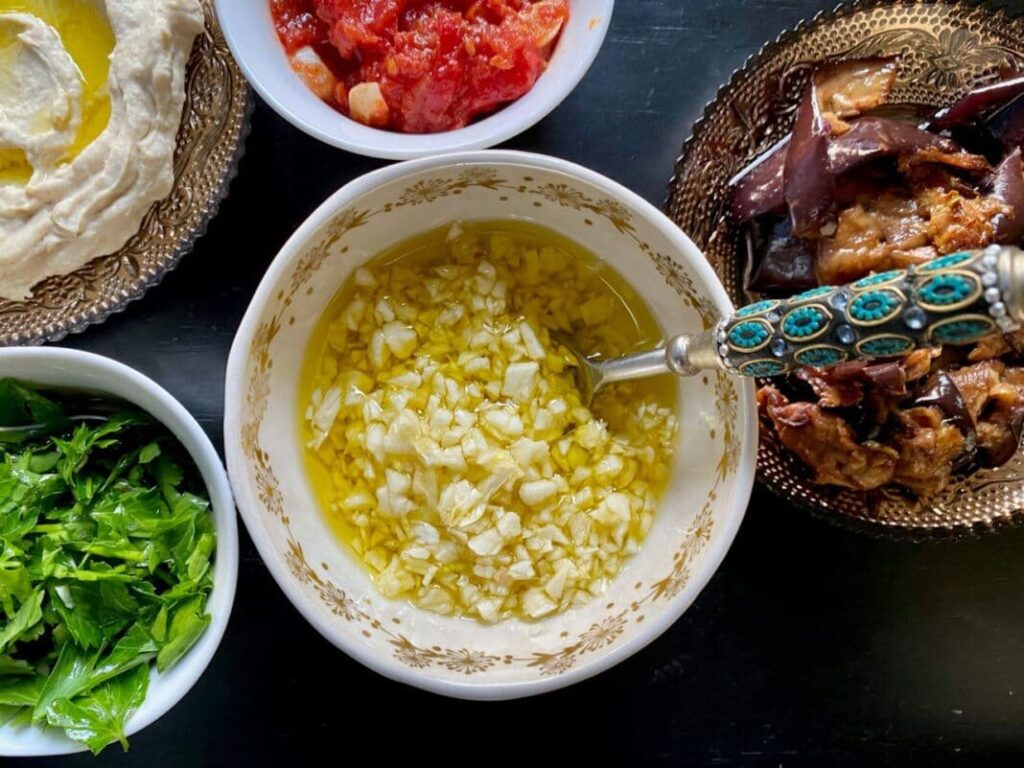Garlic is an indispensable ingredient in practically every recipe in every cuisine.

The day before his bar mitzvah, my brother Rafi had a high fever. To add to the drama of the situation, my uncle Ben’s wedding was mere hours away.
My family, including my grandparents, had flown all the way from Sydney, Australia to celebrate this milestone at the Western Wall in Jerusalem. Uncles and aunts and cousins came from Los Angeles. And invitations with the requisite image of a bar mitzvah boy in a tallit had been sent to our Israeli relatives—great aunts and uncles and many, many cousins. But the star of the show wasn’t up for the performance.
How do you get a sick person well? Quickly?
I remember the stressful strategizing between my mother and my aunts.
My mother decided that the cure was garlic. She crushed 10 cloves of raw garlic, put it in some ground beef and grilled it. My unsuspecting brother ate it.
That night he danced at the wedding. Early the next morning, two Egged buses collected guests from Ramat Gan and Petach Tikva and brought us all to Jerusalem, where we watched Rafi don Tefillin (phylacteries) and chant his Torah portion. Followed by a beautiful lunch at a catering hall and a quick ride on a camel (it was a long time ago!).
In ancient Egypt, the slaves building the Pyramids were fed garlic to make them strong. It is recorded that twice the Nile flooded and ruined the garlic crops, causing the slaves to revolt against their task masters. The Torah records that the Israelites in the desert complained to Moses about the lack of fish and melon, cucumbers, leeks, onion and garlic that they had eaten in Egypt. The Talmud recommended eating garlic for the treatment of infection and other ailments
Hippocrates, the father of Western medicine, prescribed garlic for any number of ailments, including pulmonary complaints. Ancient Greek Olympians were given garlic before their competitions and garlic was fed to soldiers before they marched into battle. The Romans also perceived garlic as an aid to strength, giving it to their soldiers and sailors. Garlic was used to “clean the arteries,” to aid the gastrointestinal tract, to treat animal bites and to alleviate joint disease.
Garlic is full of nutrients like Vitamin C, Vitamin b6, manganese, selenium, iron, copper and potassium. Garlic is an indispensable ingredient in practically every recipe in every cuisine. French garlic bread. Italian pasta. Moroccan matbucha. The pungent flavor of garlic is integral to Chinese stews and stir-fried dishes and most other Asian cuisines.
One of my earliest memories is sitting at my grandmother’s kitchen table and peeling whole heads of garlic. She would sauté it with onion as the base of her stews, add it to her chicken soup, infuse it in oil and crush it raw in her salad dressing.
For as long as I can remember, every Friday night my family has a bowl of fresh, crushed garlic doused in olive oil, spooning heaps of it onto our challah. Even the littlest kids love it.
A few years ago, I heard an interview with the Royal Horticulturalist. The final question was “What is your favorite plant?”
He replied “ that is like asking me who is my favorite child. But if I have to answer I would say garlic. It’s antibacterial, anti-fungal and antiviral.”
My husband likes to add “And the reason I love it. It’s antisocial!”

